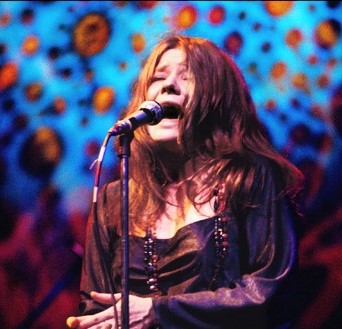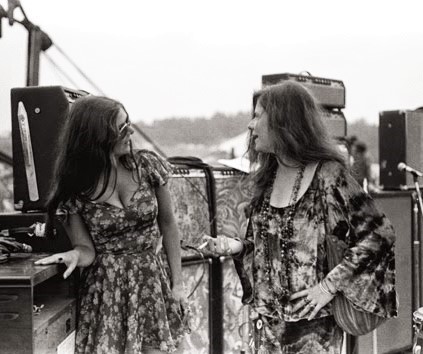
“Janis didn’t go with girls to shock”
Loverboy showed our love for Janis in issue #2 when Corinna Tomrley (now Fallon Gold) told us why Joplin is our queer icon. A new documentary demonstrates why Janis was the eternal outsider but annoying sidelines her girlfriends.
We already know the end of the Janis Joplin story going in but that doesn’t stop the journey and its conclusion being any more compelling and deeply moving.
Amy Berg’s documentary covers familiar ground but Little Girl Blue differs in that Berg had access to the family archive and spoke to many people who were close to Janis including her siblings, childhood friends, band members and ex-lovers. We hear Janis’s voice throughout and get a strong sense of the woman behind the goodtime gal ‘Pearl’ image she created.
Using Joplin’s letters home, scrap books, photographs and amazing footage (some new), and the memories of people from her life, Berg’s film gives us insight into the contradictions and complexities of Janis; a very self-aware, witty, thoughtful and surprisingly often positive woman who seems to be very honestly conveying her needs, drive, impulses and feelings to her family.
Janis’s life and her music are, of course, intertwined. She lived the blues, felt the blues, loved the blues, and she sang the blues. She was a pioneer for white women in music in terms of her behavior, her style and her voice. The soundtrack is sublime and her music is used so well. Berg leaves it to Janis to demonstrate her magic and we hear plenty of it throughout.
Strangely it is only in the credit sequence that we hear from those influenced by Joplin; Pink, Juliette Lewis and Melissa Etheridge all state how important her work was to the women who followed. Maybe it’s because this is a film about the personal world of Janis, but it’s also very much about her music and we get a detailed look at that process and development alongside her private life. It’s all intertwined. What isn’t mentioned – and is actually very rarely done so in any discussion of Janis – was her influence on male artists. Yes, Joplin was a vitally important vocalist who paved the way for women to be loud, brash, and scream their feelings in their songs (although, let’s not forget that many black women before her had done so and these were the women Janis herself was influenced by). But it would be great if, for once, her influence on decades of male vocalists could be acknowledged. There would have been no Robert Plant, no Axl Rose, no Steve Tyler rock-blues screaming without Janis’s raw voice.

Although Little Girl Blue doesn’t ignore Janis’s relationships with women, it doesn’t give them the same gravitas as the men in Joplin’s life. Peggy Caserta – the girlfriend who wrote the memoir Going Down With Janis – is heard very briefly and not seen. But we do meet an earlier lover, Jae Whitaker, who Janis met in a San Francisco gay bar and lived with for a spell. “Janis didn’t go with girls to shock” says Whitaker. Despite this, Janis’s sexuality isn’t really explored and it almost seems like an extension of her rowdy, maverick behavior like getting her male friends into bar fights. The heartbreak from the men in her life is yet again the focus. Caserta is a footnote, her junk supplier, the bad influence. It is not mentioned that Janis’s relationship with Peggy was longer than any of those she had with men and probably – yes partly because of their mutual heroin dependency but also because it was queer and enduring – the most complex. Perhaps it was the involvement of Janis’s family and the control of the Estate Of Joplin that led to this side-lining of her bisexuality. Or perhaps, once again, it wasn’t seen as important, just another quirk of Janis’s freaky free love personality. It’s a shame because this very affectionate, intimate portrait of a woman who sang her heartache like no one else, is a great piece of documentary making and a touching biographical portrait of one of the most important, influential and heartrending singers we’ve ever known.
Fallon Gold









